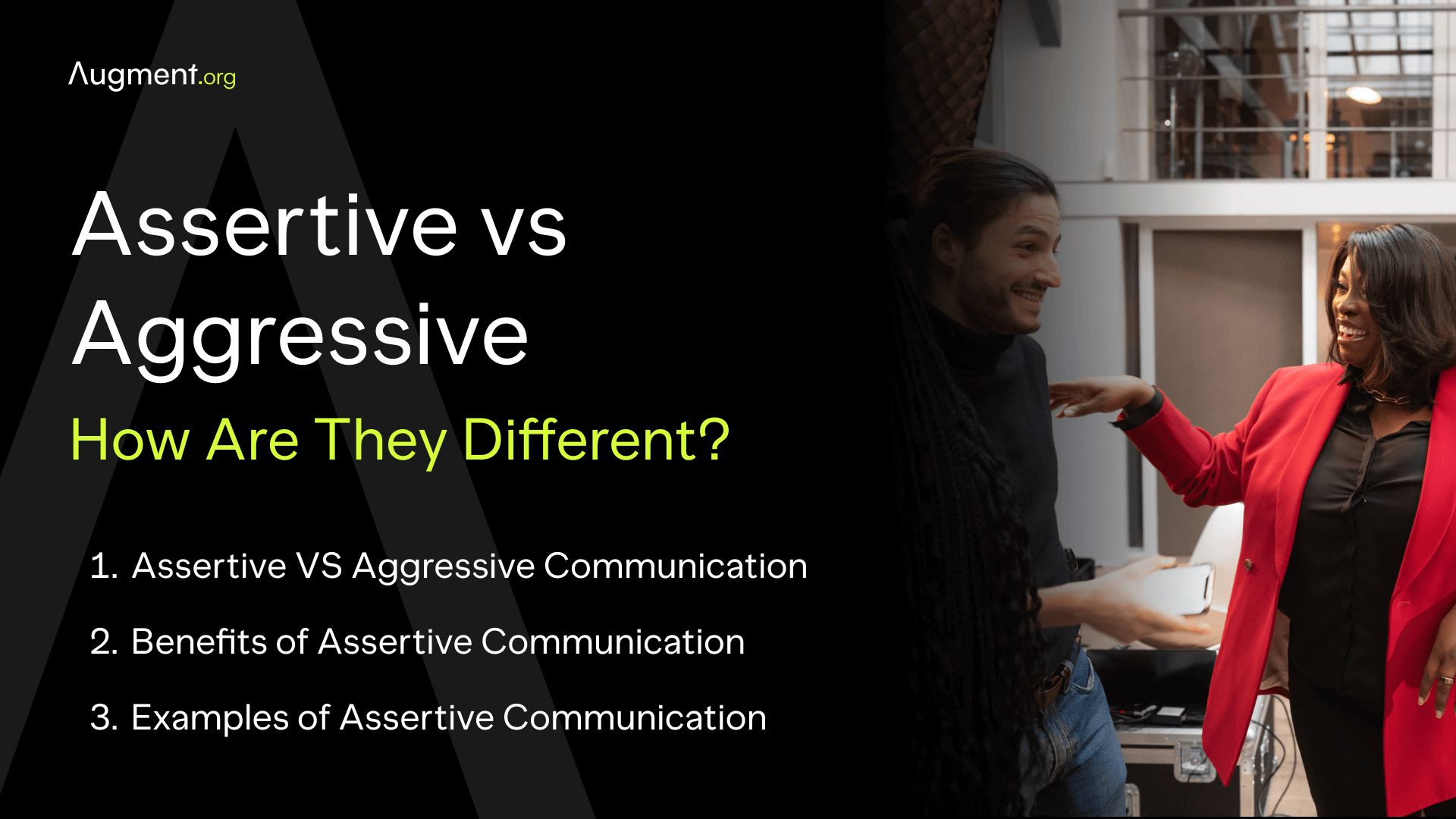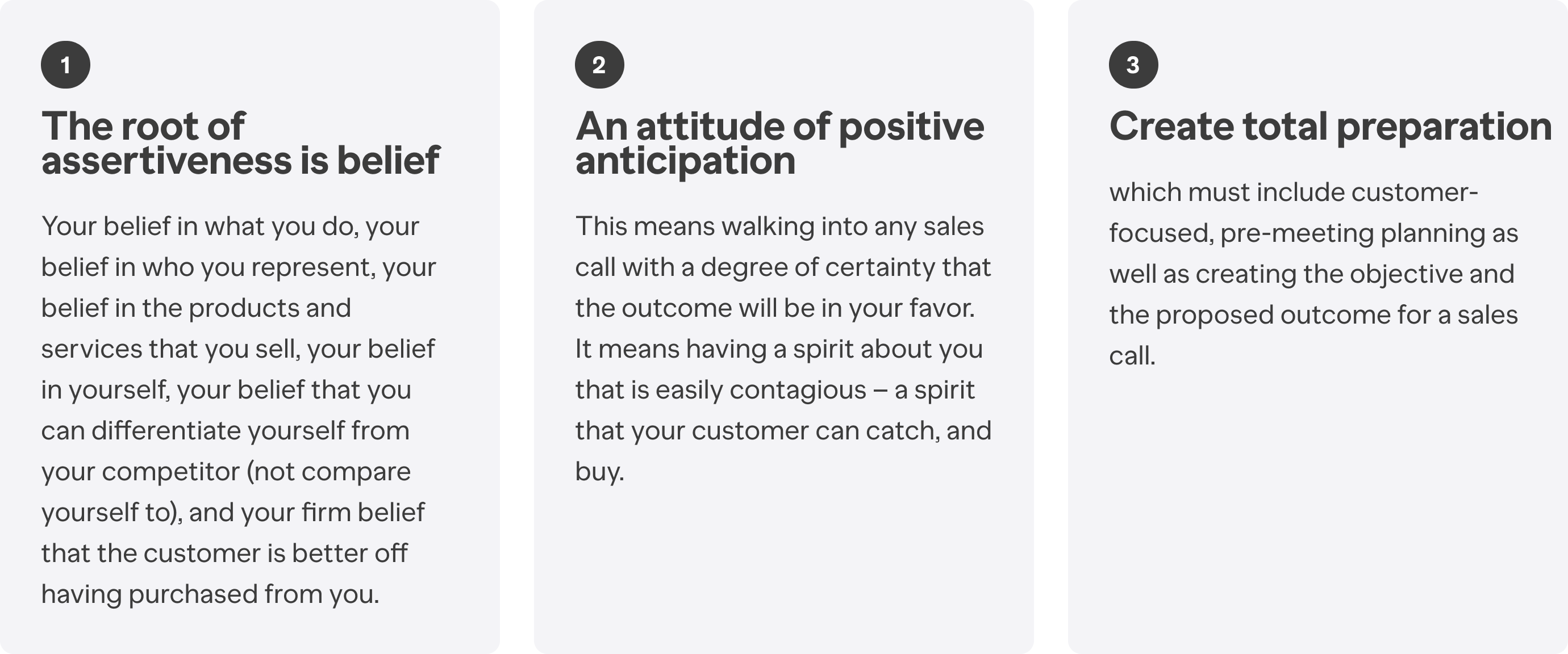Assertive vs Aggressive: How Are They Different?
Navigating the fine line between assertive vs aggressive communication is key to fostering respect and mutual understanding in personal and professional relationships.

What is Assertive Communication?
Assertive communication is a skill that strikes a balance between expressing one's own needs and respecting those of others. It involves clear, honest, and direct communication, where a person stands up for their personal rights and expresses thoughts, feelings, and beliefs in a straightforward, non-aggressive way. Unlike aggressive communication, which often disregards others' feelings, assertiveness is about being open and respectful.
Practicing assertive communication enhances mutual understanding and builds self-esteem. It's about making sure you feel heard and respected, without crossing into aggression. This style of communication encourages eye contact, confident body language, and using 'I' statements to express your opinions and feelings.

In assertive communication, the focus is not just on what you are saying, but also on how you say it. It's about being honest yet respectful, direct yet considerate, ensuring that your message is conveyed without harming or offending others.
What is Aggressive Communication?
Aggressive communication is a style where a person expresses their needs, opinions, and feelings in a manner that violates the boundaries of others. It's characterized by a lack of respect for the person on the receiving end. This approach often includes raising one's voice, using demanding or accusatory language, and can sometimes even lead to physical expressions of anger or frustration.
In aggressive communication, the focus is more on winning an argument or dominating the conversation, rather than achieving mutual understanding or finding a common ground. It disregards the feelings and opinions of others, which can lead to conflicts and damaged relationships. This style is often marked by statements that blame or criticize the listener, conveying a sense of superiority or disrespect.
While assertive communication aims to express one's viewpoint respectfully, aggressive communication often comes across as rude, confrontational, or even threatening. It lacks the balance of expressing personal needs while respecting those of others, which is crucial in healthy communication.
Assertive vs Aggressive: How do they Differ?
While assertive communication builds connections and understanding, aggressive communication often breaks them down. Recognizing and practicing the differences between these styles is crucial for effective and respectful communication in all aspects of life.
- Respect for Others: Assertive communication shows respect for both parties, while aggressive communication often disregards the other person's feelings or rights.
- Communication Style: Assertiveness involves clear, direct communication with 'I' statements and eye contact, contrasting with the often hostile and blame-focused tone of aggression.
- Listening vs Dominating: Assertive individuals listen actively and encourage mutual understanding, unlike aggressive communicators who tend to dominate the conversation.
- Body Language: In assertiveness, body language is open and confident, whereas aggressive behavior may include intimidating gestures or expressions.
- Conflict Resolution: Assertive communication aims to resolve conflicts by finding a common ground, while aggressive communication often escalates conflicts.
- Impact on Relationships: Assertiveness strengthens relationships through respect and clear communication. Aggression, conversely, can damage relationships due to fear or confrontation.
- Self-Expression vs Control: Assertiveness is about expressing personal needs and opinions respectfully; aggression seeks to control or overpower others.
- Intentions and Outcomes: The intent of assertive communication is to express oneself honestly and respectfully, leading to positive outcomes. Aggressive communication often stems from anger or frustration, resulting in negative consequences.
- Personal Rights: Assertive behavior respects personal boundaries and rights, while aggressive behavior often violates them.
Benefits of Assertive Communication in the Workplace
Incorporating assertive communication in the workplace is not just about improving individual skills; it's about creating a more dynamic, respectful, and productive work environment.
- Enhanced Team Collaboration: Assertive communication fosters a team environment where everyone feels heard and respected. This openness encourages sharing ideas and perspectives, leading to better team collaboration.
- Effective Conflict Resolution: Assertiveness helps in addressing conflicts constructively. By expressing concerns clearly and respectfully, it allows for finding solutions that benefit all parties.
- Improved Relationships: Assertive behavior promotes honest and respectful interactions, which are essential for building and maintaining healthy workplace relationships.
- Increased Clarity and Understanding: Clear, direct communication minimizes misunderstandings. Assertive communicators articulate their thoughts and intentions effectively, ensuring everyone is on the same page.
- Boosts Confidence and Morale: Practicing assertive communication can significantly boost an individual's confidence and self-esteem, contributing to a more positive workplace atmosphere.
- Encourages Mutual Respect: Assertiveness is rooted in mutual respect. It helps create a respectful work environment where different opinions and boundaries are acknowledged.
- Promotes Professional Growth: Being assertive aids in personal and professional growth. It encourages individuals to speak up, share their ideas, and take initiative.
- Reduces Workplace Stress: Assertive communication can reduce the stress and tension often caused by passive or aggressive communication styles, leading to a more harmonious work environment.
- Enhances Problem-Solving Skills: Assertive communicators tend to be effective problem solvers. They approach challenges with a constructive attitude, focusing on solutions rather than problems.
How to be Assertive Without Being Aggressive
By practicing certain techniques, you can effectively communicate assertively, ensuring that your voice is heard while maintaining respect and professionalism in the workplace.
- Use 'I' Statements: Start sentences with 'I' to express your feelings and needs without blaming others. For example, "I feel concerned when..." instead of "You always..."
- Maintain a Calm Tone: Keep your voice calm and steady. Aggressive communication often involves a raised or harsh tone, which can escalate tensions.
- Practice Active Listening: Show that you value others' opinions by actively listening, nodding, and responding appropriately. This encourages open and respectful dialogue.
- Express Empathy: Understand and acknowledge others' feelings and perspectives. Empathy can prevent misunderstandings and demonstrates respect for their experiences.
- Be Clear and Direct: Communicate your needs and opinions clearly without being vague or ambiguous. This helps in avoiding passive communication and misunderstandings.
- Maintain Appropriate Body Language: Use open and relaxed body language. Avoid aggressive gestures like pointing or crossing arms, which can be perceived as confrontational.
- Set Boundaries Respectfully: Clearly articulate your limits and boundaries in a respectful manner. This helps in maintaining personal integrity while respecting others.
- Focus on the Issue, Not the Person: Address the issue at hand rather than making personal attacks. This keeps the conversation productive and solution-focused.
- Stay Composed Under Pressure: Even in challenging situations, strive to remain composed. Losing temper can easily shift assertive communication to aggressive.
- Seek Common Ground: Aim for solutions that satisfy both parties. This demonstrates that you value the relationship and are interested in a fair outcome.



